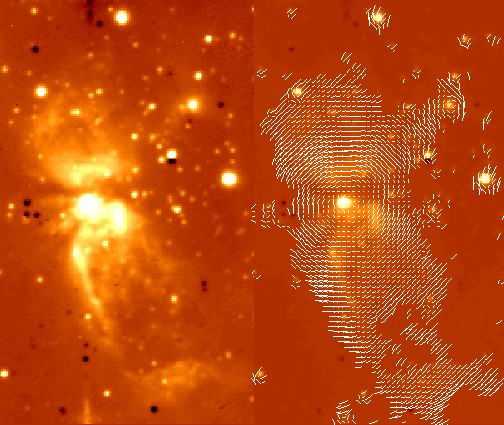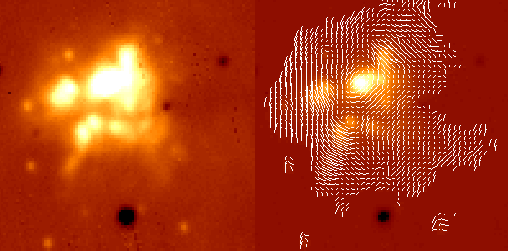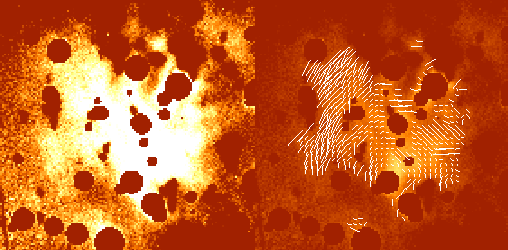(Back to my astronomy research page)
Infrared photopolarimetric maps

Sharpless 106: H band intensity map
The image scale is
0.6 arcseconds per pixel, north is at the top. The right half of the image
reproduces the data but with a different image stretch so
polarization vectors can be superimposed. The beautiful centrosymmetric
vector pattern is centered in the source IRS 4. Polarizations reach
values as high as 40% at the edges of the outflow.

Sharpless 140: H band intensity map
The image scale is 0.6 arcseconds per pixel. The polarizations reach as high as 30%, and in contrast
with Sharpless 106, the vectors are chaotically arranged,
suggesting that more than one source is responsible for the scattered light
in this nebula.

NGC 2264 region: J band intensity map
The large dark dots are holes where I have removed saturated stellar images. The right portion
redisplays the data with superimposed polarization vectors. The source
responsible for illuminating the complex region of nebulosity is
revealed as the star at the core of the centrosymmetric pattern. This
star is a deeply embedded source involved with a bipolar outflow.
(Back to my astronomy research page)